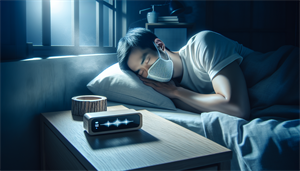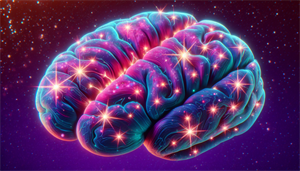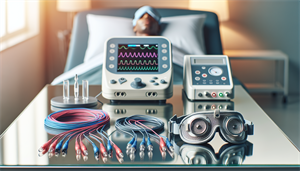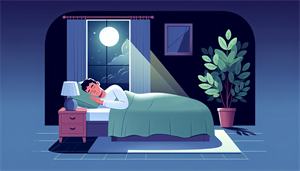Have you ever awakened to an unsettling tremor in your body? It might be more than just a random occurrence. Sleep apnea, a common sleep disorder, could be the culprit behind these tremors. This condition not only disrupts your sleep but also has the potential to trigger an array of health issues if not addressed promptly.
But can sleep apnea cause tremors, and what can we do about it? Let’s delve into the world of sleep disorders and unravel this complex relationship.
Key Takeaways
-
Sleep apnea, particularly Obstructive Sleep Apnea, can result in severe health issues, including type 2 diabetes, heart disease, and neurological symptoms such as tremors due to oxygen deprivation and brain damage caused by interrupted breathing during sleep.
-
The relationship between sleep apnea and muscle tremors is significant, with tremors being a neurological symptom due to disrupted oxygen supply to the brain, leading to inconsistent muscle signaling that may manifest as tremors during sleep or waking moments.
-
Treatment options like Continuous Positive Airway Pressure (CPAP) therapy, lifestyle modifications, and medications can manage sleep apnea and its associated tremors, potentially reversing neurological damage and improving overall health if diagnosed and addressed early.
Understanding Sleep Apnea and Its Symptoms

Sleep apnea, a common sleep disorder, is characterized by repeated pauses in breathing during sleep, leading to disruptive snoring and excessive daytime fatigue. The two main types are Obstructive Sleep Apnea (OSA), the most common form, and Central Sleep Apnea (CSA). OSA is caused by the blocking of the airways, while CSA happens when the brain fails to signal the muscles to breathe.
If left untreated, sleep apnea can lead to several significant health issues such as type 2 diabetes, heart disease, stroke, and even brain damage. This brain damage may result in symptoms such as fatigue, headaches, memory loss, and difficulty concentrating. Hence, immediate medical attention is advised if you’re exhibiting symptoms of sleep apnea to avoid worsening of severe health conditions.
The Relationship Between Sleep Apnea and Muscle Tremors

Sleep apnea and muscle tremors share a close relationship, with the key link being oxygen deprivation and its neurological impact on the body. This deprivation can result in irregular oxygen supply to the brain and body, causing involuntary muscle movements during sleep, ultimately leading to symptoms such as waking up shaking.
But how exactly does this happen? We will examine how oxygen deprivation and the neurological impact of sleep apnea result in muscle tremors.
Oxygen Deprivation and Muscular Activity
Sleep apnea can induce oxygen deprivation through sudden drops in blood oxygen levels during sleep. This lack of oxygen can have several physiological consequences, including:
-
Nocturnal hypoventilation
-
Oxygen desaturation
-
Respiratory muscle weakness
-
Changes in skeletal muscle structure and function
These changes can disrupt normal breathing, affect the oxygen supply to the brain and body, and eventually cause inconsistent messages to be sent to the muscles, resulting in jerking or shaking.
Diminished oxygen supply, or hypoxia, can accelerate muscle fatigue, and augmented oxygen supply, or hyperoxia, can diminish the rate of fatigue. Alterations in arterial oxygen content can also impact the vasodilator response to exercise. The jerky movements in limbs due to oxygen deprivation, specifically positive myoclonus, may arise from cortical and/or subcortical structures.
Neurological Impact of Sleep Apnea
Beyond impacting your breathing, sleep apnea can also harm the brain’s white matter, particularly in severe cases where deep sleep is reduced. This brain damage, which can be caused by both chronic sleep deprivation and oxygen deprivation, can lead to a range of neurological symptoms, such as:
-
sudden awakenings with shortness of breath
-
chronic fatigue
-
daytime sleepiness
-
morning headaches
-
restless sleep
-
depression
-
anxiety
-
memory loss
-
trouble concentrating
-
insomnia
Moreover, sleep apnea has been found to induce tremors and tremor-like symptoms, and there exists a connection between sleep apnea and movement disorders, including Parkinson’s disease, which is characterized by tremor as one of its symptoms. However, the good news is, this neurological damage may be reversible with suitable treatment.
Restless leg syndrome, another sleep-related movement disorder, can also be associated with sleep apnea.
Diving Into REM Sleep Behavior Disorder (RBD)

REM Sleep Behavior Disorder (RBD) is a sleep disorder where individuals physically act out their dreams, often accompanied by vocal sounds and sudden, violent movements of the arms and legs during REM sleep. Interestingly, sleep apnea is frequently associated with RBD, and treatment for sleep apnea, such as CPAP therapy, has been shown to alleviate RBD symptoms. Furthermore, sleep apnea can manifest ‘pseudo RBD’ symptoms, which typically resolve following treatment of the sleep apnea.
The muscle tremors experienced by individuals with RBD during REM sleep can be attributed to the loss of normal REM atonia, leading to dream enactment behavior. This chronic condition is often associated with these sleep disruptions and can significantly disrupt an individual’s sleep quality and overall well-being.
Other Symptoms Associated With Sleep Apnea
Apart from muscle tremors, sleep apnea is associated with a range of other symptoms. For instance, restless sleep can be attributed to comorbid conditions such as Restless Legs Syndrome (RLS) or a misaligned circadian rhythm. Individuals with sleep apnea can also experience brain fog, memory loss, and difficulty concentrating. These cognitive impairments can significantly affect their daily activities and productivity.
Moreover, sleep apnea is believed to be a contributing factor to cognitive impairment and memory loss, with a suspected correlation between sleep apnea and Alzheimer’s disease. Thus, early symptom recognition and management can significantly enhance sleep apnea control and promote better life quality.
Essential Tremor vs. Sleep Apnea-Induced Tremors
An essential tremor is a neurological disorder characterized by:
-
Involuntary and rhythmic shaking
-
Primarily affecting the hands but also potentially impacting the head, voice, arms, and legs
-
Tremors are typically most noticeable during movement and may decrease or cease when the individual is at rest
-
Often misidentified as Parkinson’s disease, despite having its own unique set of symptoms
On the other hand, tremors related to sleep apnea are attributed to its impact on breathing, resulting in irregular oxygen supply to the brain and body. This can lead to erratic neural signals to the muscles, particularly in the arms and legs, resulting in the characteristic jerking or shaking movements associated with these tremors. Correct diagnosis and differentiation between essential tremor and sleep apnea-induced tremors is vital for the effective treatment and management of these conditions.
Diagnosing Sleep Apnea-Related Tremors
Diagnosing sleep apnea-related tremors is a crucial step towards managing this condition. Polysomnography, also known as a sleep study, plays a significant role in diagnosing sleep disorders such as sleep apnea and other sleep-related breathing disorders.
We will explore the role of polysomnography in diagnosis and how evaluating risk factors and medical conditions can assist in identifying the cause of sleep apnea-related tremors.
Role of Polysomnography in Diagnosis

Polysomnography is a diagnostic sleep study that involves recording brain activity, eye movements, and muscle activity to identify and diagnose various sleep disorders, such as sleep apnea and associated tremors. This diagnostic tool plays a critical role in identifying irregularities in brain activity, eye movements, and muscle activity suggestive of sleep apnea and its consequential neurological effects, including tremors.
Despite limited evidence on its validity in diagnosing sleep apnea-related tremors, polysomnography has shown potential in diagnosing sleep-related respiratory disorders. It plays a crucial role in restoring the brain structure of sleep apnea patients to a normal state, greatly enhancing mood, energy levels, and overall quality of life.
Assessing Risk Factors and Medical Conditions
In addition to polysomnography, assessing risk factors and medical conditions is vital in diagnosing sleep apnea-related tremors. Some risk factors and medical conditions to consider include:
-
Obesity, which can increase the likelihood of developing sleep apnea, leading to tremors and tremor-like symptoms
-
Parkinson’s disease, which is a risk factor for sleep apnea-related tremors
-
Sleep disorders, which can contribute to the development of sleep apnea-related tremors
-
Excess weight, which is also identified as a risk factor for sleep apnea-related tremors.
Medical conditions such as obstructive sleep apnea, essential tremor, and sleep disturbances linked to Parkinson disease can also lead to tremors related to sleep apnea. A thorough evaluation of these elements is essential for the diagnosis of sleep apnea-related tremors and the development of an effective treatment strategy.
Treatment Options for Sleep Apnea and Associated Tremors
Once diagnosed, there are various treatment options available to manage sleep apnea and associated tremors. These include Continuous Positive Airway Pressure (CPAP) therapy, lifestyle modifications, and medications.
We will explore further how these treatments can help alleviate symptoms of sleep apnea and reverse brain damage induced by the disorder.
Benefits of Continuous Positive Airway Pressure (CPAP) Therapy
Continuous Positive Airway Pressure (CPAP) therapy is the gold standard in treating obstructive sleep apnea. This form of treatment works by using a machine to administer air pressure through a mask, maintaining the openness of the upper airway passages, and averting snoring and sleep apnea. Regular and consistent CPAP treatment has even shown the capability to restore the brain structure of sleep apnea patients to a normal state.
CPAP therapy has the potential to greatly enhance mood, energy levels, and overall quality of life. It plays a crucial role in decreasing nighttime awakenings and excessive daytime sleepiness in patients with sleep apnea, making it an effective treatment for managing sleep apnea-induced tremors.
Lifestyle Changes and Medications
Aside from CPAP therapy, certain lifestyle changes can also help manage sleep apnea and reduce the occurrence of tremors. These changes include:
-
Weight loss
-
Increased physical activity
-
Cessation of alcohol and smoking
-
Avoidance of specific medications
-
Adoption of healthier sleep routines
-
Maintaining a healthy diet
These changes can significantly contribute to the management of sleep apnea, potentially reducing the severity of associated tremors.
In addition to lifestyle changes, medications that can be prescribed to manage sleep apnea-induced tremors include:
-
Temazepam
-
Estazolam
-
Melatonin
-
Clonazepam
-
Carbonic anhydrase inhibitors like acetazolamide and methazolamide
-
Beta-blockers like propranolol
These medicines can effectively address tremors during sleep-wake transitions and have minimal side effects.
The Importance of Addressing Sleep Disorders Early
Addressing sleep disorders early is crucial to prevent long-term health issues and improve overall well-being. Sleep apnea plays a significant role in maintaining brain health, and addressing it early can:
-
Improve treatment effectiveness
-
Restore normal sleep function
-
Enhance daytime performance
-
Prevent the disorder’s negative impacts on health.
Untreated sleep apnea can lead to:
-
Recurrent arousal from sleep
-
Oxygen desaturations
-
Increased daytime sleepiness
-
Fatigue
-
High blood pressure
-
Heart disease
-
A disrupted sleep cycle
-
An increased risk of various health problems
Hence, immediate medical attention is necessary if symptoms of sleep apnea are present to avoid these prolonged repercussions.
Recent Developments in Sleep Medicine
Sleep medicine has seen significant advancements over the past decade, including:
-
Artificial intelligence
-
Wearable devices
-
Telemedicine
-
Home sleep testing
-
The use of artificial intelligence for sleep disorder diagnosis and treatment
These advancements continue to improve our understanding of sleep disorders, including sleep apnea and its associated symptoms, such as tremors.
In addition to technological advancements, there are also innovative diagnostic tools that aid physicians in diagnosing patients with suspected moderate sleep apnea to severe obstructive sleep apnea. Some of these tools include:
-
Hand/Finger
-
NightOwl
-
Sleepimage SaMD
-
WatchPAT
-
Belun Ring
-
ANNE Sleep
-
ApneaTrak
Recent research findings indicate that muscle twitches may play a role in causing sleep disturbances in individuals with sleep apnea. These developments provide hope for better diagnosis and treatment of sleep apnea and associated tremors.
Summary
In conclusion, sleep apnea is a common sleep disorder that can lead to various health issues, including tremors, if not addressed promptly. Understanding the relationship between sleep apnea and muscle tremors, recognizing the symptoms, and seeking early diagnosis and treatment are crucial steps towards managing this condition. With the advancements in sleep medicine, there is hope for more effective diagnosis and treatment options for sleep apnea and associated tremors. Remember, good sleep is vital for optimal health, so don’t ignore the signs. If you’re experiencing symptoms of sleep apnea or tremors, seek medical help right away.
Frequently Asked Questions
Can sleep apnea cause neurological problems?
Yes, sleep apnea can cause neurological problems, such as an increased risk of stroke and other neurological conditions. It's important to address sleep apnea to reduce this risk.
Can sleep apnea cause Parkinson's symptoms?
Yes, sleep apnea can cause Parkinson's symptoms by reducing oxygenation to the brain, leading to the elevation of a specific protein that triggers the degenerative process of Parkinson's.
What causes tremors at night while sleeping?
Involuntary muscle twitches, known as sleep myoclonus, can cause tremors at night while sleeping. This can occur on its own or as a result of a sleep disorder or neurological disorder.
What is sleep apnea?
Sleep apnea is a sleep disorder characterized by recurrent pauses in breathing during sleep, leading to disruptive snoring and excessive daytime fatigue. It can have serious health implications.
What is REM Sleep Behavior Disorder (RBD)?
REM Sleep Behavior Disorder (RBD) is a sleep disorder where individuals physically act out their dreams, often accompanied by vocal sounds and sudden, violent movements of the arms and legs during REM sleep. It can result in injuries to the individual or their sleep partner.


